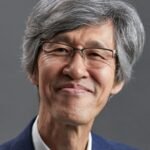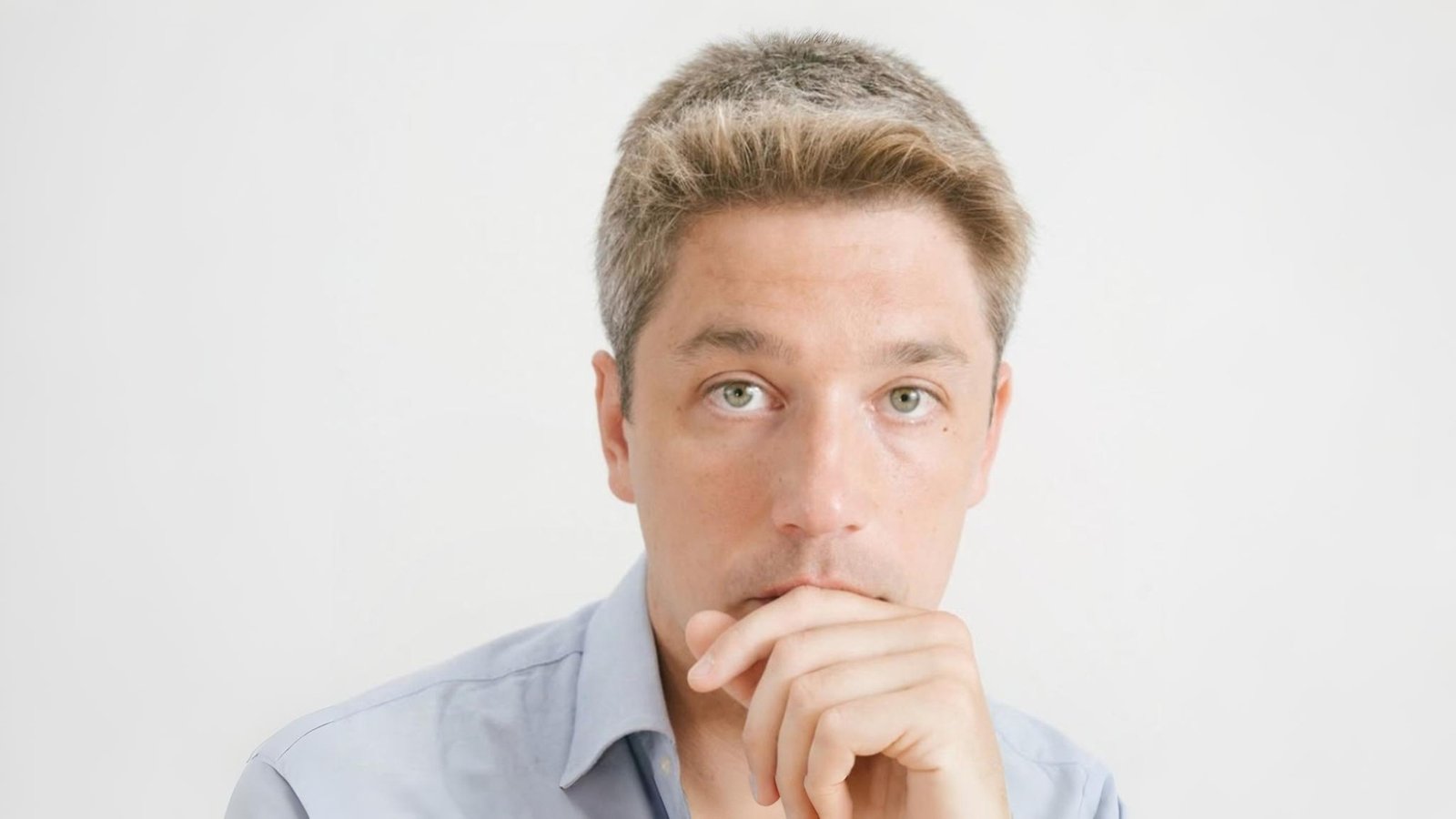
The Making of ENCOUNTERS: Hiroshi Tanaka’s Photographic Journey
June 23, 2025
Everything with Ryuta Suzuki from Insects & Architecture
June 23, 2025Marco Di Coscio
Marco Di Coscio is an Italian photographer with a background in film directing and acting, whose work explores the human condition through portraiture, reportage, and the emotional connections between people and animals. Influenced by both theatrical training and documentary traditions, he approaches photography as a means of understanding the world with empathy and precision.
Thank you! I’m honoured to be among the winners.
I’m a photographer from Lucca, Italy, with a BA in Film Directing from the London College of Communication. I also studied acting at HB Studio in Manhattan and trained in theatre in Italy for several years.
I was drawn to the camera as a way to observe and connect. What began as a focus on people’s quiet stories has evolved into a broader exploration of the human condition — through portraiture, reportage, and the often-overlooked bond between humans and animals.
I don’t lose myself behind the lens — I find myself. That idea came from the teachings of Uta Hagen, whose approach to performance deeply impacted my way of seeing.
Today, my work spans studio explorations of the human form to long-term documentary projects grounded in empathy. My influences range from Howard Schatz’s sculptural studies of the body to Paolo Pellegrin’s poetic reportage and Irving Penn’s timeless precision. Though my style evolves, I remain committed to photography as a tool for understanding, not judgment.
The photograph was taken during a workshop with Carlijn Jacobs in Venice, where I unexpectedly crossed paths with Steve McCurry. I mustered the courage to ask him to sit for a portrait — not as a legend, but as a person. After spending a few days around him and his entourage, he agreed. I proposed a few ideas that he wasn’t keen on, but I didn’t give up. I wanted to capture something warm and intimate.
On the day of the shoot, a remarkably kind and handsome man happened to be nearby. Steve noticed him and, to my surprise, invited him in front of the camera. It was Steve’s idea to take a portrait of the two of them embracing. That gesture transformed the image — it became about connection, humility, and the quiet power of spontaneity.
Winning this award feels like a quiet confirmation that my instincts — to seek honesty, closeness, and emotion in photography — are worth trusting. It encourages me to keep following the unexpected.
Though I held a camera as a child, it wasn’t until I moved to London for my BA in Film Directing at the London College of Communication that photography truly captivated me. I threw myself into it—researching gear and technical workflows every day, experimenting with continuous lights and speedlights, and spending three years working as a gaffer on university film projects.
Along the way, I discovered that photography wasn’t just a technical craft but a means of making sense of my own struggles. Framing a scene, chasing the right light, and connecting with my subjects became ways to process hardship and find clarity.
Today, it remains what anchors me—a tool that makes life more bearable, a bridge to deeper connections with humanity, and a source of purpose in my journey.
I don’t really have a single “go‑to” rig—my work spans studio, location, reportage, and even experimental infrared. That said, these are my core tools:
• Fujifilm GFX 100S for studio work: Its medium‑format sensor and tonal depth give me the resolution and dynamic range I need for refined, large‑scale prints.
• Sony a7R IV for on‑location and reportage: Lightweight, versatile, and high‑res, it lets me move quickly without sacrificing image quality.
• Sony a7R IV (infrared‑converted) for creative, climate‑aware projects: Infrared adds an otherworldly texture that underscores my interest in our relationship with the natural world.
Favourite feature: instant feedback via the electronic viewfinder or rear LCD—no more waiting (or guessing) as you would with film. On complex sets, that real‑time preview is invaluable for dialling in light, composition, and mood on the spot.
The hardest part wasn’t the lighting or the framing—it was overcoming my own hesitation in approaching a living legend, and then finding the language to propose an intimate portrait with someone I barely knew. Inviting Steve McCurry into a warm, vulnerable moment felt almost presumptuous at first.
It took a few days of earning his trust, listening to him, and gauging his comfort before I could suggest we try something more personal. Navigating that balance—showing respect for his stature while gently guiding him toward genuine connection—was the true challenge behind the shot.
I’m drawn to extremes—the places and people that live at the edge of contrast. Growing up without strict boundaries left me wired to explore tension: pleasure versus duty, light against deep shadow. That impulse pushes me toward subjects and settings where opposites collide.
In practice, it means I’ll photograph a homeless person huddled in an abandoned factory just as readily as I’ll work with a high‑fashion model in a glass studio. I seek out those who linger in darkness—people with visible and invisible scars—and I place them alongside figures of conventional beauty. It’s in that contrast that I find my own balance and, I hope, reveal a truer picture of humanity.
Ultimately, I look for moments that stretch our comfort zones: a drug addict’s raw vulnerability, a disabled athlete’s quiet strength, a dilapidated urban ruin lit by a single shaft of light. By confronting extremes, I accept them—and invite viewers to do the same.
My biggest influence isn’t a single person but a convergence of people, experiences—and extreme contrasts.
1. Uta Hagen’s acting teachings taught me presence and honesty in a single take.
2. Irving Penn’s precision showed me how restraint and elegance make an image timeless.
3. Howard Schatz’s sculptural studio work opened my eyes to the body as form and emotion.
4. Paolo Pellegrin’s poetic reportage taught me that photography can be a powerful act of empathy.
5. Richard Mosse’s ethical use of technology inspired me to marry aesthetics with social conscience.
Beyond individuals, my unfettered upbringing—a life lived at the edge of pleasure and duty, light and shadow—drives me toward extremes in subject and setting. That tension, between control and surrender, has shaped every frame I make. Together, these influences push me to create images that are at once raw and elegant, intimate and universal.
Photography awards are more than contests—they're opportunities to grow, challenge yourself, and connect with a wider audience. Submitting your work forces you to reflect on your vision, refine your choices, and share your voice with confidence.
My advice? Be intentional with your selection, make sure the image fits the brief and delivers an emotional impact, and trust your instincts. A strong, authentic photograph will always stand out more than one that simply follows trends.
I think AI will continue to shape the future of photography in powerful ways, especially in terms of workflow and accessibility. It might simplify certain tasks, like retouching or organising archives, but for me, the heart of photography remains human.
My approach is deeply personal and emotional—AI can support the process, but it can’t replace intuition, connection, or storytelling. So I see it as a tool, not a substitute.
Winning Entry
Steve Mc Curry | 2025 London Photography Awards
"I met Steve Mc Curry at the Venezia International Photo festival. I asked him if I could take his portrait and to my amazement he said yes. I quickly set up a studio on San Servolo Island where we took a few shots. In the picture Steve is together with Joop Doku, a music producer from the Netherlands."
Click here to check out the winning page for the award-winning entry.
Marco Di Coscio
Marco Di Coscio is an Italian photographer with a background in film directing and acting, whose work explores the human condition through portraiture, reportage, and the emotional connections between people and animals. Influenced by both theatrical training and documentary traditions, he approaches photography as a means of understanding the world with empathy and precision.
Check out more insights through The Making of ENCOUNTERS: Hiroshi Tanaka’s Photographic Journey here.






